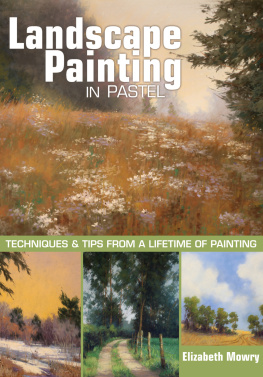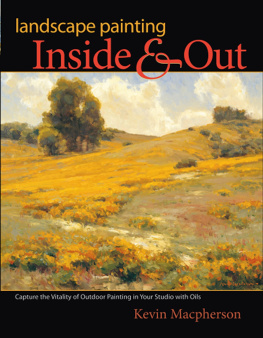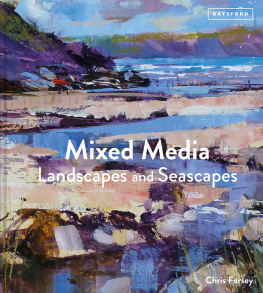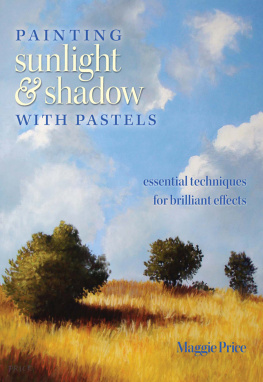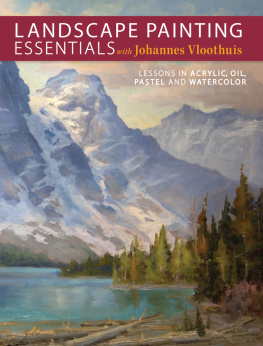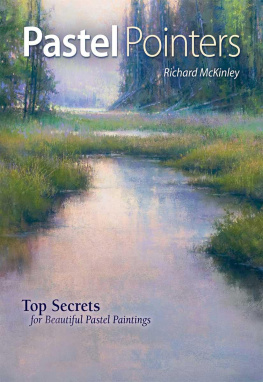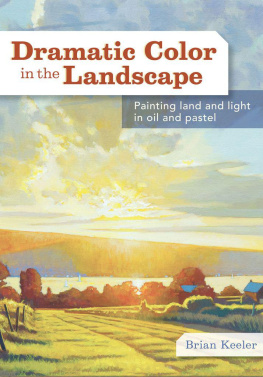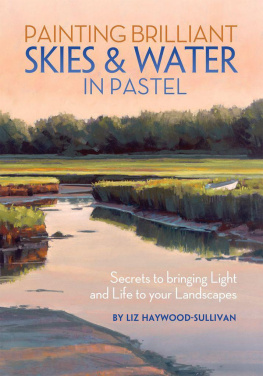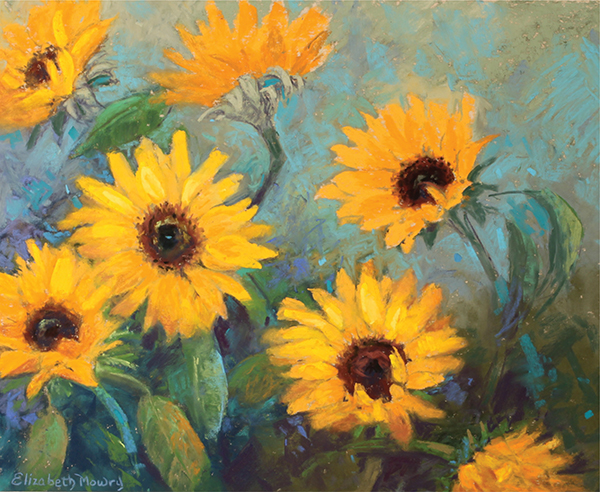Thank you for purchasing this Artist Network eBook.
Sign up for our newsletter and receive special offers, access to free content, and information on the latest new releases and must-have art resources! Plus, receive a coupon code to use on your first purchase from NorthLightShop.com for signing up.
or visit us online to sign up at
http://artistsnetwork.com/ebook-promo
Dedication
To all of my students, again, this book is for you. I have truly enjoyed our time together: the honest sharing, like blank pages filling, overflowing; like painting surfaces saturated with the colors and compositions of life; the dialogue as with grasses in the breeze; the ideas, invited, free, about ethereal sense of place and common sense; the balancing of emotional connection with the craft, enthusiasm with skill as well as the agony of frustration with the ecstasy of what works; the friendships that began in my classes and continue; our joy for one another as the rewards earned begin to appear on the horizon.
Western Meadow
Pastel on Ersta sanded paper
17" 23" (43cm 58cm)
In this springtime painting, color choice and value play a role in creating the subdued mood of early morning. Soft edges quiet the background and detail appears only in a few foreground flowers.
TOWARD THE VILLAGE
Pastel on Wallis paper
13" 20" (33cm 51cm)
Contents
CHAPTER 1
CHAPTER 2
CHAPTER 3
CHAPTER 4
CHAPTER 5
CHAPTER 6
In this small outdoor color study, I was interested in the shapes and coloration of the sunflowers and leaves. My goal was to accurately represent the values (lights and darks) and edges (hard or soft).
SUNFLOWERS III
Pastel on UART paper
11" 13" (28cm 33cm)
Introduction: Nature as Teacher
In 2005 I relocated to Colorado from the Hudson Valley in upstate New York where I had spent my childhood and most of my formative adult life. I was introduced to nature comprised of a much different landscape than what I had previously known. I also returned to teaching workshops all around the world after taking time to focus on my own painting. The impact that these experiences have had on my art, writing and teaching are fully reflected in this book.
During the past years I have also learned immeasurably from jurying national and international painting exhibitions. Teaching has always been a privilege and I am exceedingly grateful for all that I have learned from my students. In my workshops I demonstrate my use of methods to attain the results I seek, but I do not insist that my way is the only way. It is just the manner in which I choose to express natures impressions. I always try to encourage my students to convey what is personally meaningful to them in their own work. I hope that what I have learned so laboriously by trial and error will save you time and add to your success.
Landscape Painting in Pastel is an expanded version of an earlier, now out-of-print book that I wrote in 2001 titled The Pastelists Year. It contains artwork from the former edition, but much of the content has been revised and updated. New demonstrations, exercises and comparative studies show the relationship between each pastel technique and its place within the finished work. I emphatically believe that we continue to learn each time we paint, and I feel that during the time that has passed since The Pastelists Year I now have more to share and have tried to do so throughout the pages that follow.
The first chapter offers detailed notes about materials plus demonstrations of basic techniques to help you get started. The next four chapters take you through changes that occur throughout the year. Keep in mind that the changes in nature differ depending upon the geographic location. Temperature ranges, topography, altitude and weather each influence what we refer to as our seasons. A season in one part of the world can be directly opposite in another location.
At the beginning of chapters you will find material culled from my journal. These paintings in the mind suggest what to look for in nature as you make a connection with your subject matter and select a certain place over others when many are accessible. I invite you to follow the thought patterns that lead to selection of subject, color and mood. Remember that it is our response to all of the senses that constitutes the emotional essence of a painting.
The final chapter is devoted to my method of critiquing your own work for successful results. It has become an integral part of the workshops that I teach and is a frequently requested program when I am invited to speak at art society events.
My goal for this book is to show how I translate natures impressions into personal expressions. Know with certainty that you can do the same. Of course, each of us sees differently. Personally, I paint nature because it is what I know best. While nature supplies shape and movement, light and shadow, sound and scent, what we create with them depends on what lies within ourselves. Our feelings about lifeour memories, longings, fears and joysinfluence how we perceive all that surrounds us. My aim is to show you how to translate and edit what you see into what you paint, thus pairing emotional response to natures changes with an ever-growing mastery of pastelist skills.
Within the same painting, broad and bold painting strokes create a dialogue with linear drawing strokes. Stroke variation can often strengthen the compositional design of a painting.
HEN HARVEST
Pastel on Wallis paper
10" 14" (25cm 36cm)
Private collection
CHAPTER 1
Getting Started With Pastel
If you are new to pastel, I hope you wont be intimidated by the term technique. A reassuring definition, according to Webster, tells us that technique is simply an artists special method of execution used to obtain a certain result. This book shows methods that work for me, and Ill be right alongside you to lend encouragement. Youll find that the process of actually paintingthe learning that comes from applying what you have discoveredis all there is to mastering a technique. You can watch someone else do it, you can read about it to enhance your understanding, but youll always learn best by

